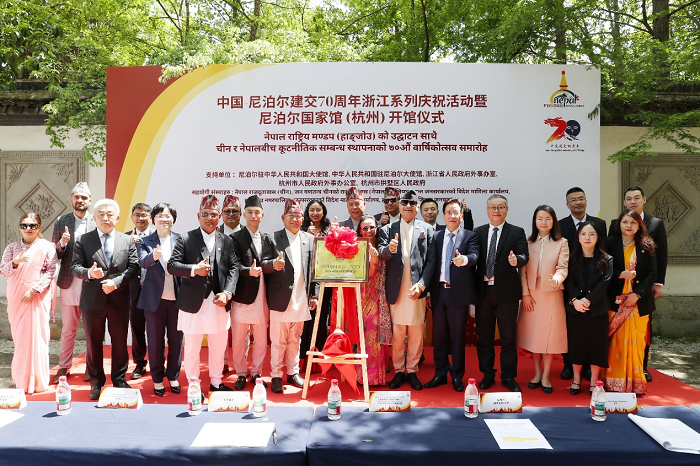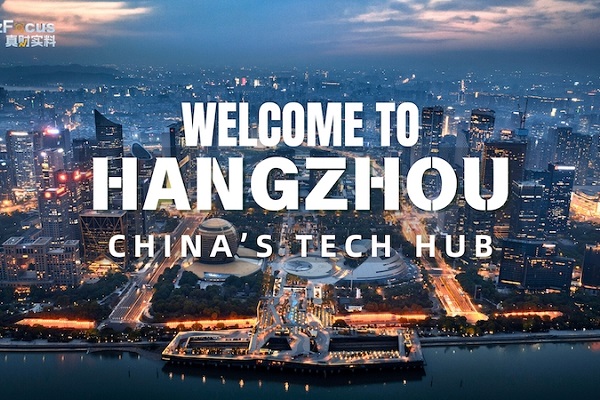Infrastructure cooperation in Belt and Road countries boosts demand

Wang Zelong (left), controlling shareholder of CNNC Hua Yuan Titanium Dioxide, and Liu Jie, secretary-general of the China National Coatings Industry Association, attend the 2025 China International Coatings Summit. CHINA DAILY
As global supply chains undergo profound restructuring and domestic competition intensifies, Chinese companies are increasingly looking overseas. For the coatings industry in particular, international expansion is quickly shifting from a strategic choice to a development necessity. It is poised to be a major growth engine over the next five to 10 years, experts say.
With the support of national policies and global initiatives such as the Belt and Road Initiative, Chinese coatings enterprises are accelerating their international footprint through mergers and acquisitions, overseas manufacturing and technical cooperation.
"There are three major advantages supporting Chinese coatings companies going global," said Liu Jie, secretary-general of the China National Coatings Industry Association. "These are policy tailwinds, cost and technology advantages, and strong demand in emerging markets."
Liu explained that infrastructure cooperation under the BRI is driving up demand for coatings products, while trade agreements such as the Regional Comprehensive Economic Partnership are lowering tariff barriers across the Asia-Pacific region.
At the same time, China's coatings industry benefits from a complete industry chain and stable access to key raw materials including titanium dioxide. With environmental coatings technologies now matching or even surpassing international standards in certain sectors, Chinese companies are well positioned to compete globally.
Demand in emerging markets is another driver. Urbanization in Southeast Asia and Africa is progressing, with annual growth in architectural coatings demand reaching 8-10 percent, according to global research firm Statista. "Industrial coatings, especially anti-corrosion types, are also seeing increased demand due to petrochemical investments in the Middle East," Liu added.
"Looking ahead, companies need to boost their research and development capabilities, leverage policy support and stay agile in the face of geopolitical uncertainties," Liu said.
A leading example of this international push is CNNC Hua Yuan Titanium Dioxide, one of China's largest titanium dioxide producers. In 2024, the company achieved a record-breaking 2.65 billion yuan ($359.07 million) in export sales — accounting for nearly 40 percent of its total revenue. Exports of its core product, rutile titanium dioxide, increased by more than 30 percent compared to 2023. The company now serves markets across Asia, Europe and South America. Export volumes have reached tens of thousands of metric tons in countries such as India, Brazil and Turkiye.
"Our short-term focus is on cultivating the Southeast Asian and European markets," said Wang Zelong, the company's controlling shareholder. "With our strong track record in supply continuity and product quality, we are reinforcing our strategy to forge long-term strategic partnerships with major downstream enterprises overseas."
In the long term, Chinese producers of sulfate-process titanium dioxide are gaining a global edge thanks to abundant mineral resources and refined production methods. "We've begun to outperform overseas peers in terms of cost, customization capabilities and product value," Wang added.
Demand-side dynamics are also encouraging. The rise of electric vehicles is boosting global demand for automotive coatings, and infrastructure projects in developing countries such as Thailand and India are expanding rapidly.
CNNC Hua Yuan Titanium Dioxide is investing accordingly by establishing marketing centers worldwide and tapping into new markets via strategic business and equity partnerships.
The company aims to ramp up exports to 300,000 tons per year, which would represent roughly 15 percent of the total export volume from all Chinese titanium dioxide producers.
Local governments have played a key role in supporting this expansion through logistics assistance, export credit services and incremental export incentives.
Domestically, CNNC Hua Yuan Titanium Dioxide is spearheading a circular economy model by collaborating with regional chemical companies. Such an integrated approach allows for in situ processing of byproducts, forming a green "sulfur-phosphorus-iron-titanium-lithium "resource utilization system. This closed-loop production model not only solves environmental bottlenecks in titanium dioxide manufacturing but significantly lowers the cost of producing lithium iron phosphate — a core material for electric vehicle batteries.
-
Inside Hangzhou: China's high-tech dream factory
March 12, 2025



